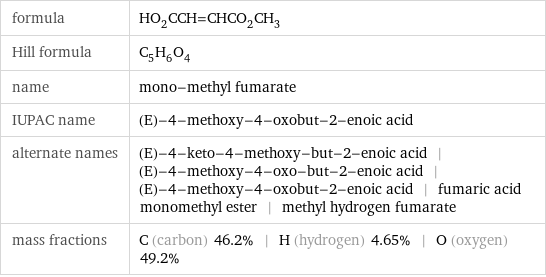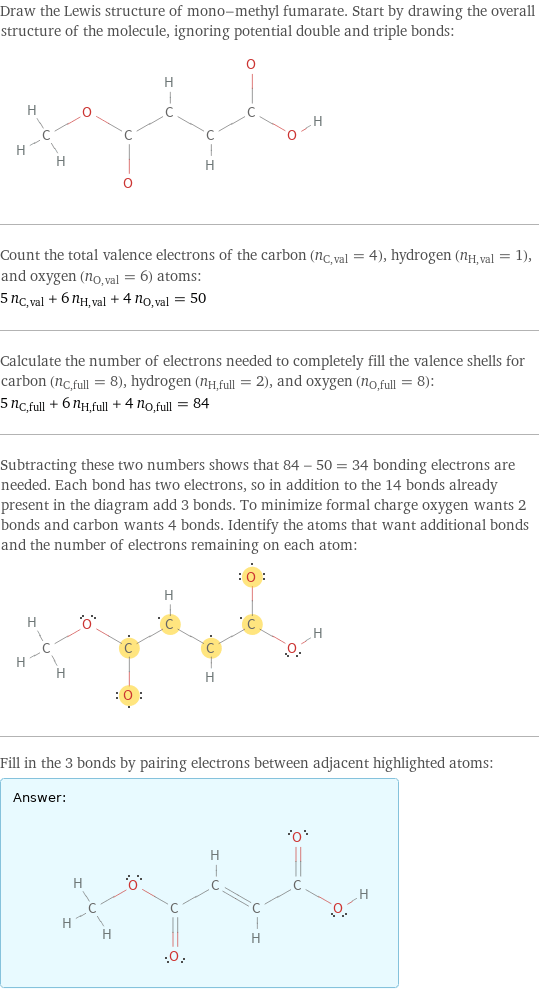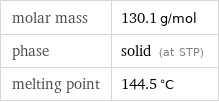Input interpretation

mono-methyl fumarate
Chemical names and formulas

formula | HO_2CCH=CHCO_2CH_3 Hill formula | C_5H_6O_4 name | mono-methyl fumarate IUPAC name | (E)-4-methoxy-4-oxobut-2-enoic acid alternate names | (E)-4-keto-4-methoxy-but-2-enoic acid | (E)-4-methoxy-4-oxo-but-2-enoic acid | (E)-4-methoxy-4-oxobut-2-enoic acid | fumaric acid monomethyl ester | methyl hydrogen fumarate mass fractions | C (carbon) 46.2% | H (hydrogen) 4.65% | O (oxygen) 49.2%
Lewis structure

Draw the Lewis structure of mono-methyl fumarate. Start by drawing the overall structure of the molecule, ignoring potential double and triple bonds: Count the total valence electrons of the carbon (n_C, val = 4), hydrogen (n_H, val = 1), and oxygen (n_O, val = 6) atoms: 5 n_C, val + 6 n_H, val + 4 n_O, val = 50 Calculate the number of electrons needed to completely fill the valence shells for carbon (n_C, full = 8), hydrogen (n_H, full = 2), and oxygen (n_O, full = 8): 5 n_C, full + 6 n_H, full + 4 n_O, full = 84 Subtracting these two numbers shows that 84 - 50 = 34 bonding electrons are needed. Each bond has two electrons, so in addition to the 14 bonds already present in the diagram add 3 bonds. To minimize formal charge oxygen wants 2 bonds and carbon wants 4 bonds. Identify the atoms that want additional bonds and the number of electrons remaining on each atom: Fill in the 3 bonds by pairing electrons between adjacent highlighted atoms: Answer: | |
3D structure

3D structure
Basic properties

molar mass | 130.1 g/mol phase | solid (at STP) melting point | 144.5 °C
Units

Chemical identifiers

CAS number | 2756-87-8 PubChem CID number | 5369209 PubChem SID number | 24883828 SMILES identifier | COC(=O)C=CC(=O)O InChI identifier | InChI=1/C5H6O4/c1-9-5(8)3-2-4(6)7/h2-3H, 1H3, (H, 6, 7)/b3-2+/f/h6H MDL number | MFCD00063174